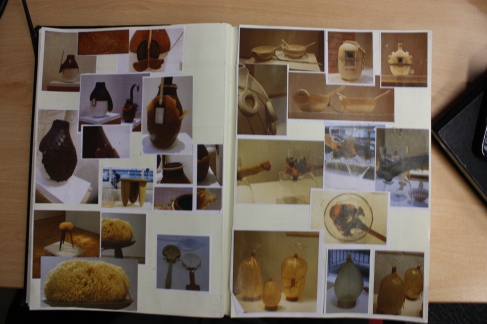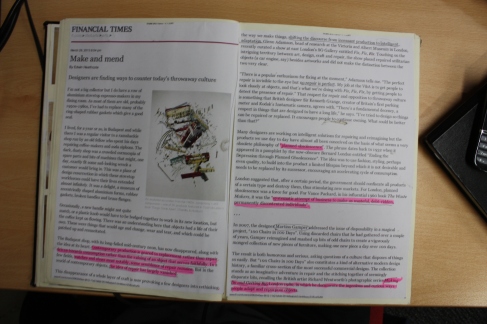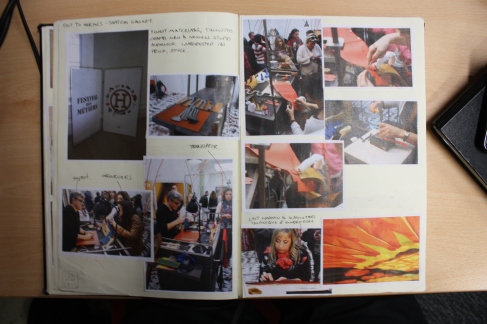I Began my project Research in May 2013. During this time I was working for PearsonLloyd. I then went on to work for Tom Cecil and Finally Peter Marigold for the duration of the Summer. All of this experience is having a profound effect on my work.
Attached are a few pages I kept in the beginning. 
Forma Fantasma’s Exhibition at Libby Sellers Gallery was breath-taking I hope it can have a significant influence on my final design. Primarily their scrutiny of materials and their properties


I was surprised to find the Economist, New York Times and mainstream tabloids in the UK writing extensively about Craft, Making and most recently Repair. Above is ‘Make and mend’ by Edwin Heathcote of the Financial Times and ‘Design for repair’ by Dan Lockton of the Guardian.

The Saatchi Gallery has a ‘Metiers des Hermes’ exhibition it was wonderful to see skilled workers practicing their craft. I was a little put out by all the nobility wandering around interested more in the price then the practice.

Richard Wentworth’s ‘Making-do and Getting by’ Project has a wonderful narrative about the hidden motives of people. My favourite is the image of the Jack Russel tethered to the ladies handbag, the caption reads “what’s in the bag and how protective is this small dog? Is the bag just heavy enough to keep the dog tethered or is the pooch indeed guarding it?”

Fiona Raby and Anthony Dunne continue to offer me substantial inspiration as a Designer. their Design for engaging the wider community about our possible futures is a moving and sometimes terrifying look at what life could be.

This is my first attempt at creating a Brief. it focuses on cutlery as a cultural conduit. I wasn’t convinced when I wrote this. I was looking for a reason to justify such a project and nothing presented itself. I hoped understanding manufacturing processes and exceptional stories would inspire me.


Meteoric Rocks, Inuit material scarcity were two themes which emerged from my research. Ultimately under the constraints of my obligation to university there was not enough to fulfill my final year project. Unwilling to give up completely I pursued the idea of material scarcity in an urban Environment. Something I had a first hand appreciation of having spent the year living in London.


























